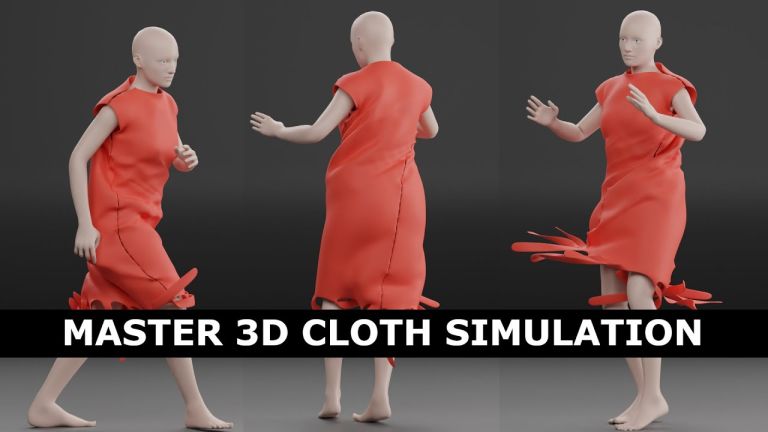Mastering 3D Cloth Simulation: From Basics to Realistic Fabrics
Unraveling the Art of Simulating Cloth in 3D
!Cloth Simulation
Introduction
In the captivating world of 3D graphics, simulating cloth is an art form that breathes life into virtual garments, game characters, and dynamic environments. Whether you’re a seasoned animator or a curious enthusiast, understanding the intricacies of 3D cloth simulation opens doors to realism and creativity. In this blog post, we’ll explore the fundamentals, techniques, and growth potential of cloth simulation.
1. Continuous vs. Discrete Modeling
Continuous Representation
- Continuous modeling treats fabric as a seamless whole, ignoring the gaps between threads.
- Utilizing continuum mechanics and finite element methods (FEM), we simulate cloth using partial differential equations.
- While computationally expensive, this approach yields authentic results.
- Resources for further exploration:
- Méthode des éléments finis – Wikipedia
- Basics of Continuum Mechanics – ETH
Discrete Representation
- Discrete modeling acknowledges fabric’s true structure, composed of intersecting threads (warps and wefts).
- We zoom in to reveal the fabric’s underlying mesh:
- Triangles: Basic building blocks of cloth surfaces.
- Particles: Represent mass points within the fabric.
- Forces (gravity, tension, wind) act on particles, resulting in realistic cloth behavior.
- While sacrificing some physical accuracy, discrete models are feasible for real-time simulations.
2. Simulating Cloth with Particles and Forces
Particle-Based Cloth Simulation
- Create a mesh of interconnected particles, where each particle represents a mass point.
- Springs connect adjacent particles, simulating fabric elasticity.
- External forces influence particle motion (e.g., wind, gravity).
- Iterative solvers update particle positions over time.
- Widely used in real-time applications.
Triangle Mesh Cloth Simulation
- Represent cloth as a mesh of triangles.
- Each triangle’s vertices are connected by springs.
- Forces (stretching, bending, shear) act on these springs.
- Collision detection ensures cloth interacts with other objects.
- Algorithms include Verlet integration and implicit time-stepping.
3. Growing Your Cloth Simulation Skills
- Experiment with different geometries:
- More vertices enhance realism but increase computation time.
- Strike a balance between detail and performance.
- Explore software tools:
- Blender: Offers robust cloth simulation
- Skillshare: Access tutorials and classes on cloth physics





